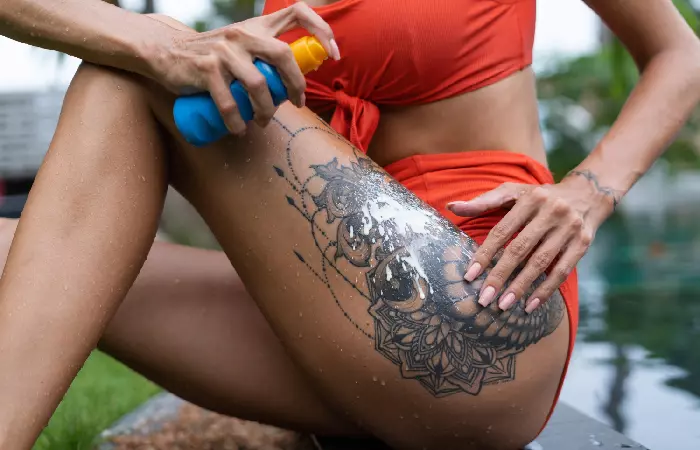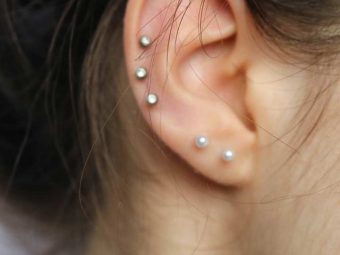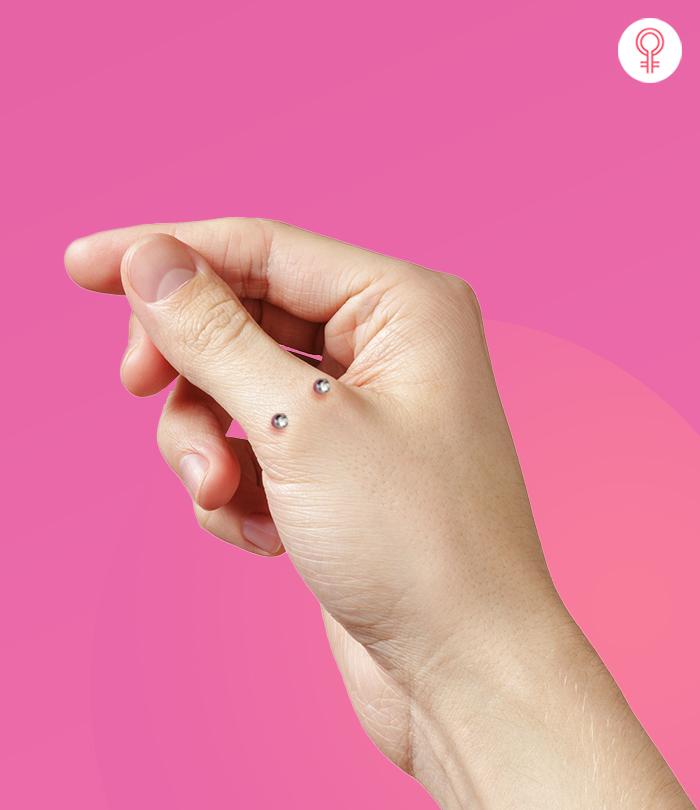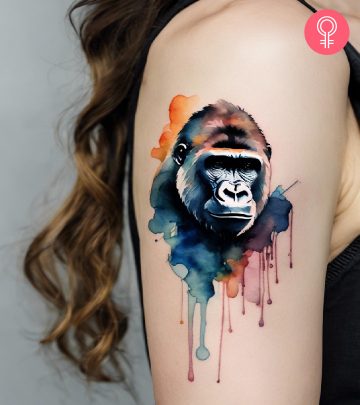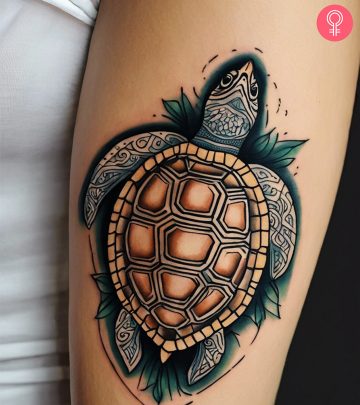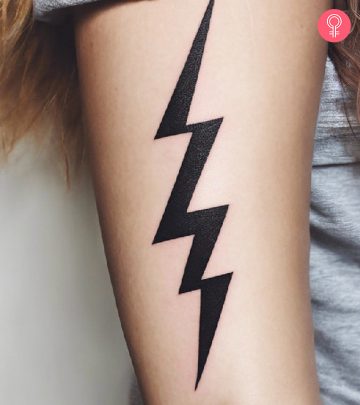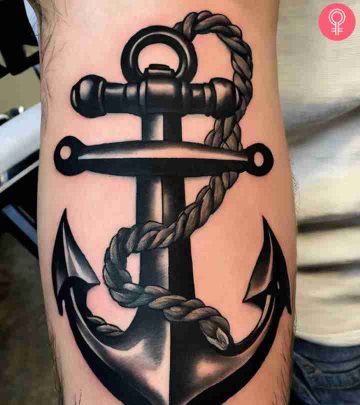How Long After A Tattoo Can You Swim? A Complete Guide
Look after your tattoo with care before you dive into the pool for a relaxing swim!

Image: Shutterstock
Getting a tattoo is an exciting experience. However, one may forget that the healing journey is challenging and requires them to follow careful instructions to avoid infections. Plus, if you love swimming, the wait can seem long and tiresome. So, how long after a tattoo can you swim? While the temptation is strong, resist the urge until your tattoo has fully healed. In this article, we will discuss when you can go for a swim after getting a tattoo, how to cover it while swimming, among other aspects. Embrace the wait, and when the time is right, enjoy the water without jeopardizing the lasting beauty of your carefully chosen tattoo design. Scroll down to know more!
In This Article
Can You Go Swimming After Getting A Tattoo?
Swimming with a new tattoo might seem tempting, but it is crucial to exercise restraint. Freshly inked skin is an open wound and water bodies like pools, oceans, and hot tubs harbor bacteria that can increase the risk of infection. While your love for swimming is understandable, submerging your tattoo prematurely could lead to fading, distortion, or other undesirable outcomes. Being patient during the initial healing period is key. It allows your body to form a protective barrier over the tattoo.
 Pro Tip
Pro TipSwimming after getting a new tattoo is avoided to allow the tattoo to heal properly. But why is this crucial to the healing process? Learn more in the next section.
Why You Shouldn’t Go Swimming With A New Tattoo
Swimming with a new tattoo might affect your tattoo’s result and your overall health in the following ways:
- Risk Of Infection: Fresh tattoos are open wounds and are susceptible to bacterial infections and septic shock. While redness and itching are common after getting a tattoo, keep an eye out for infection symptoms like open sores, pus, severe pain, and fever (1), (2).
- Compromised Healing: The excess moisture absorbed by the tattoo may disrupt the natural healing process and cause bubbling and infection.
- Skin Irritation: Exposure to harsh chemicals or potential contaminants in natural or salt water can irritate the healing skin. This can potentially lead to discomfort and itching.
- Color Fading: Water exposure, especially in chlorinated pools, may cause the tattoo to fade and blur.
- Tattoo Damage: Immersing a healing tattoo in water raises the risk of physical damage. Accidental rubbing or scraping against the pool surface can result in peeling or increase the risk of scarring.
- Obstruction To Protective Barrier Formation: Swimming can hinder the process of scabbing over the tattoo. This leaves it more vulnerable to external elements and potential damage.
Swimming when the tattoo hasn’t properly healed yet can increase the risk of infection and slow down the overall healing process. It is important to know when after getting a tattoo can you actually go for a swim. Learn more about it in the next section.
How Long After A Tattoo Can You Swim?
How long a tattoo takes to heal varies from person to person. It also depends on the location, tattoo size, and the individual’s skin type. Typically, it is recommended to avoid swimming for 2 to 5 weeks to allow the fresh tattoo to heal completely. This is especially true when it comes to exposing your tattoo to chlorinated water.
Your skin undergoes various stages of peeling and scabbing during this healing period. You also may consult a licensed tattoo artist or a board-certified dermatologist for more clarity in this regard. This is important, as hopping for a swim without allowing your tattoo to heal completely can have some unpleasant consequences, as discussed previously.
But you can avoid these effects by covering up your tattoo while swimming. We discuss in the next section how you can do that right.
How To Cover Your Tattoo While Swimming?
Covering your tattoo during the healing stage is not recommended by most experienced tattoo artists. The bandage can trap the moisture and germs from the water and affect the healing process. However, you may try any of the following methods if that swim is non-negotiable.
- Waterproof Bandage: Use waterproof bandages to create a protective barrier and keep your tattoo from getting wet.
- Plastic Tattoo Sealant: Wrap your tattoo tightly with a specialized tattoo sealant. However, be cautious, as it may not be suitable if you are in the water for extended periods.
- Tattoo Sleeves: These are often made from materials that provide a protective layer to your tattoo while allowing some flexibility and breathability.
- Waterproof Sunscreen: Apply a high-quality waterproof sunscreen to your healed tattoo before swimming. While this won’t create a physical barrier, it can offer some protection against water and sun exposure.
 Pro Tip
Pro TipThis is what happens if you swim while your tattoo is healing. That said, despite these precautions, you may still be concerned about an adverse reaction. But fret not. The following tips can help.
Tips To Reduce Infection Risk
- Rinse With Clean Water And A Cleanser: Gently rinse your tattoo with clean, lukewarm water and a gentle cleanser to remove any chlorine, salt, or other contaminants.
- Pat Dry: Gently pat your tattoo dry with a clean, soft cloth or clean paper towels. Avoid rubbing the area as this can irritate the healing skin.
- Apply An Antibacterial Ointment: Apply an antibacterial ointment or lotion recommended by your tattoo artist to help prevent infection. Make sure to follow the aftercare instructions.
- Avoid Sun Exposure: Keep your tattoo out of the sun as it may be more sensitive after exposure to water. However, apply a high-SPF sunscreen to protect the healing skin if you absolutely need to step into the sun.
- Look Out For Signs Of Infection: Watch out for signs of infection like increased redness, swelling, or discharge. Consult a healthcare professional immediately if you notice any of these symptoms.
- Resume Normal Aftercare: Continue with your regular aftercare routine and avoid activities that could further compromise the healing process.
Getting inked is truly an exciting experience. But abstaining from swimming during the healing process, especially if you love it, can be hard. While the typical healing process takes 2 to 5 weeks, the tattoo’s location, size, and your skin type also determine this duration. That said, wearing a waterproof bandage and a waterproof sunscreen may help protect the tattoo from infection and damage should you really need to go for a swim. Plus, ensure you cleanse the tattoo with a mild soap and warm water and apply a healing ointment to speed up the healing process.
Frequently Asked Questions
How do I know if my tattoo is healed enough to swim?
You know your tattoo is healed when there is no more peeling or scabbing, redness, or tenderness. This usually occurs a couple of weeks after you get your tattoo.
Can I use the hot tub with a new tattoo?
No, avoid using the hot tub with a new tattoo as the heat and chemicals can potentially compromise the healing process and increase infection risk.
Can I swim in the sea with a new tattoo?
No, swimming in the sea with a new tattoo is not recommended. Exposure to salt water and ocean bacteria can infect the healing tattoo and even lead to a septic shock (2).
Does salt water fade tattoos?
Yes, constant exposure to salt water can cause the tattoo to fade over time. The abrasive nature of salt can leach the ink from the tattoo and affect its vibrancy and clarity.
What does chlorine do to tattoos?
Prolonged exposure to chlorine can irritate and dry the healing tattoo. This may cause the dry skin to fade and peel off due to loss of moisture.
Key Takeaways
- Avoid swimming for 2 to 5 weeks until your tattoo is fully healed to prevent infections and complications.
- Use waterproof dressings or specialized tattoo sealants for added protection during a swim.
- Clean the tattoo well and use an antibacterial ointment after a swim to minimize the risk of infections and discoloration.

Image: Stable Diffusion/StyleCraze Design Team
What can you do to reduce the risk of infection and damage if you ended up going for a swim with a healing tattoo? Check out this video for some simple and effective tips.
References
Articles on StyleCraze are backed by verified information from peer-reviewed and academic research papers, reputed organizations, research institutions, and medical associations to ensure accuracy and relevance. Read our editorial policy to learn more.
- Tattoo Ink-Related Infections – Awareness Diagnosis Reporting and Prevention The New-England Medical Review and Journal.
https://www.researchgate.net/publication/230721590_Tattoo_Ink-Related_Infections_-_Awareness_Diagnosis_Reporting_and_Prevention - Vibrio vulnificus septic shock due to a contaminated tattoo National Library of Medicine.
https://www.ncbi.nlm.nih.gov/pmc/articles/PMC5614220/






